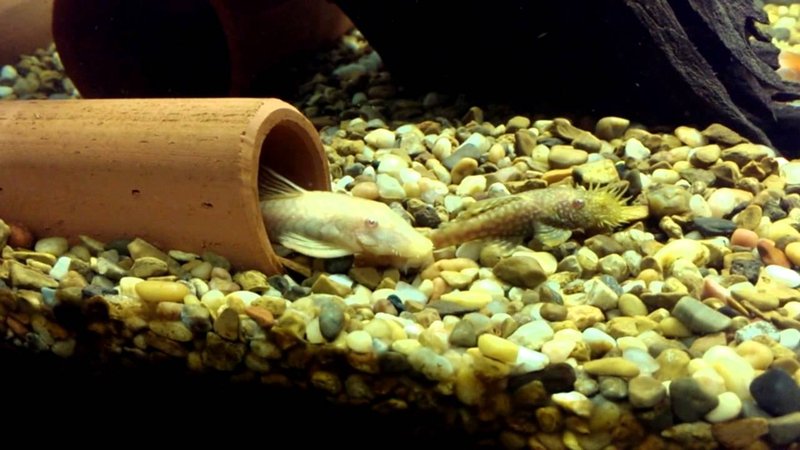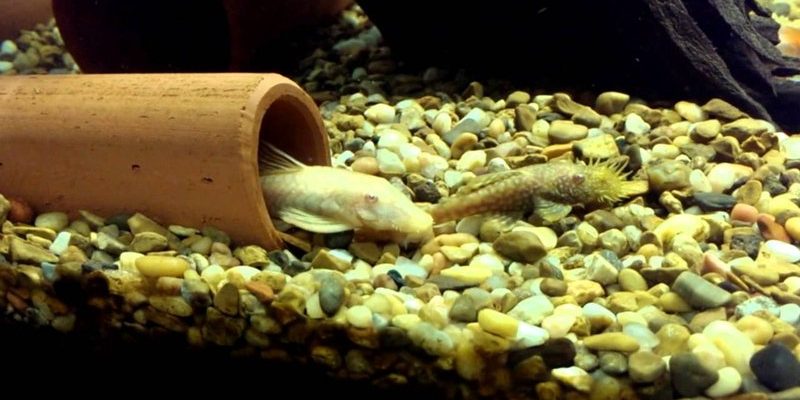
The Plecostomus, often affectionately referred to as “Plecos,” can be a great choice for community tanks. They’re like the unsung heroes of your aquarium, working tirelessly to keep the algae levels down while adding their own unique charm. However, understanding Plecostomus behavior is crucial for ensuring they thrive in your tank. So, what should you watch for, and what does their behavior mean? Let’s break it down.
Understanding Plecostomus Behavior
One of the most intriguing aspects of the Plecostomus is their behavior. Unlike many fish that swim around with gusto, Plecos tend to hang out near the bottom, often glued to rocks or surfaces. Here’s the thing: they’re primarily nocturnal. This means that while you might not see them much during the day, come evening, they’ll start to become active and might even put on a show.
You might wonder why they behave this way. The simple answer is that they’re evolved to find safety in the shadows of rocks and plants. This behavior helps them avoid predators and find food. So, if you notice your Pleco clinging to the glass or hiding in a cave during the day, it’s totally normal. Just give them some space, and they’ll be out and about when the lights go down.
Common Behavioral Traits of Plecostomus
Plecostomus fish have several distinctive behaviors that can tell you a lot about their health and happiness. Here are a few you should be on the lookout for:
- Algae Grazing: Plecos are often known for their algae-eating habits. You might see them suctioning themselves to surfaces, munching away at any green stuff that develops. This is great for your tank and can help keep it clean.
- Seeking Shelter: They love to hide! If your Pleco is spending a lot of time in caves or under decorations, it’s probably just enjoying its cozy spot. Providing hiding places is essential for their well-being.
- Swimming Patterns: While they’re generally bottom dwellers, don’t be surprised if yours occasionally swims to the surface. This can happen when they’re looking for air or just a little change of scenery.
By observing these behaviors, you can ensure that your Plecostomus is comfortable and not stressed out. A happy fish is a healthy fish!
Social Interactions with Other Fish
When it comes to community tanks, the behavior of your Plecostomus around other fish is something to keep an eye on. Generally speaking, Plecos are peaceful creatures. However, they’re not hermits either; they can be quite social with their tank mates as long as they have ample space.
You might notice your Pleco exploring and interacting with other fish, especially when they feel secure. However, keep an eye out for aggression. If your Plecostomus starts to display territorial behaviors, like chasing or flaring their fins, it might be time to rearrange your tank or introduce more hiding spots.
Some fish can be a bit too curious or boisterous for a shy Pleco, which can stress them out. Always research the types of fish you’re planning to keep together to avoid any unfortunate juxtapositions.
Signs of Stress in a Plecostomus
It’s crucial to watch for any signs that your Plecostomus might be stressed. Here are some behaviors that could indicate something’s off:
- Hiding Excessively: While it’s normal for Plecos to hide, if your fish is always in the same spot and barely comes out, it may indicate stress.
- Faded Colors: A healthy Plecostomus will have vibrant colors. If you notice them turning dull, this could be a sign of discomfort or illness.
- Unusual Swimming Patterns: Erratic swimming or thrashing can be indicators of trouble. If your Pleco is swimming frantically or rubbing against surfaces, it’s time for a closer look.
In these cases, it’s wise to assess your tank conditions, including water quality, temperature, and compatibility with tank mates.
Caring for Your Plecostomus: The Importance of Environment
Creating a suitable environment for your Plecostomus can significantly affect their behavior. Think of your tank as their home; it needs to be cozy and secure.
Start with plenty of hiding spots. Using caves, rocks, and decor mimics their natural habitat and gives them a sense of security. Make sure your tank has a good substrate; they prefer soft gravel or sand where they can sift through the substrate for leftover food.
Water quality is also important. Plecos thrive in clean, well-filtered water. Perform regular water changes to keep parameters stable, and don’t forget to check pH levels regularly. A sudden change in water conditions can stress them out, leading to the behaviors we’ve discussed.
Feeding Habits and Their Behavioral Influence
Plecostomus are primarily herbivores, which means they’ll flourish on a diet rich in plant matter. In the wild, they graze on algae and detritus, but in your tank, they’ll appreciate a mix of pellets, fresh vegetables, and algae wafers.
You might notice that feeding time can be the most active part of their day! They can get quite excited, swimming around as they anticipate their meals. Providing a varied diet not only keeps them happy but can also enhance their colors and overall health.
However, overfeeding can lead to unhealthy behaviors and tank conditions. Stick to a regular feeding schedule and only offer what they can consume in a short period. This will not only keep your Plecostomus healthy but also help maintain a balanced ecosystem in your aquarium.
Understanding the behavior of your Plecostomus doesn’t just make you a better fish keeper; it helps you foster a healthy and vibrant aquarium environment. By recognizing their needs and watching for specific behaviors, you can ensure they thrive alongside your other aquatic friends.
Whether they’re feeding, exploring, or seeking shelter, every little quirk adds to their charm. So, the next time you glance at your Pleco hanging out in the corner of the tank, remember—it’s just being itself. Keep the water clean, provide plenty of hiding spots, and get ready to enjoy the subtle beauty of your Plecostomus’s personality. Happy fish keeping!

